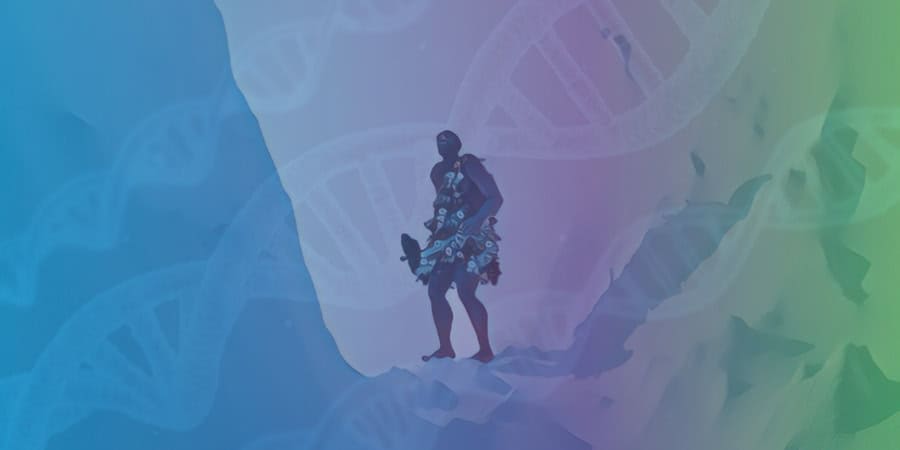Key Takeaways
- Nuanced Native American Lineage: New research reveals that Native Americans have a genealogical connection to ancient populations in northern coastal China. This challenges the previous understanding that Native Americans solely descended from Siberians who migrated via the Bering Strait.
- Migration via Pacific Coast: The research suggests that ancient migrants from northern coastal China likely reached the Americas by traveling along the Pacific coast, rather than through an inland ice-free corridor.
- Genetic Connection to Japan: The study also reveals a genetic connection between Native Americans and the indigenous Ainu people of Japan. A group of migrants from northern coastal China contributed to the gene pool of the Ainu during the deglaciation period.
- Archaeological Similarities: The genetic connection between China, Japan, and the Americas suggests not only cultural but also genetic links among these regions during the Pleistocene. Shared techniques of crafting projectile points indicate commonalities in ancient societies.
- Further Research: While the focus was on mitochondrial DNA, corresponding findings from Y chromosomal DNA suggest the presence of male predecessors in northern coastal China. More research is needed to explore other Eurasian lines and gain a comprehensive understanding of Native American origins.
A groundbreaking revelation in anthropology has been made, connecting Native Americans to ancient inhabitants of northern coastal China through a specific female lineage.
This research, orchestrated by a group from the Chinese Academy of Sciences, has brought to light that the genealogy of Native Americans is more nuanced than previously understood, with contributions extending from northern coastal China.
Decoding the Origins of Native Americans
The long-standing presumption was that Native Americans were descendants of Siberians who migrated via the Bering Strait’s fleeting land bridge.
Nevertheless, a collection of recent findings, including genetic, geological, and archaeological data, implies a series of human migrations from diverse Eurasian regions to the Americas.
To illuminate the Asian roots of Native Americans, the Chinese researchers embarked on a journey of discovery, focusing on an ancestral line present in mitochondrial DNA, which traces maternal lineage.
This line possibly links the Paleolithic populations of East Asia to the early settlers across America, spanning regions like Chile, Peru, Bolivia, Brazil, Ecuador, Mexico, and California.
Tracing the Elusive Lineage
In their quest, the team examined over 100,000 current and 15,000 ancient DNA samples from all over Eurasia.
They successfully identified 216 contemporary and 39 ancient individuals belonging to this uncommon lineage.
Through an evaluation of the accumulated mutations, geographical locations, and carbon-dated age of these individuals, the researchers reconstructed the branching path of the lineage.
The study highlighted two notable migration events from northern coastal China to the Americas.
In both scenarios, it is suggested that these ancient migrants likely journeyed to America via the Pacific coast, rather than through an inland ice-free corridor, which would have been inaccessible at the time.
This research, orchestrated by a group from the Chinese Academy of Sciences, has brought to light that the genealogy of Native Americans is more nuanced than previously understood, with contributions extending from northern coastal China.

The Epochs of Migration
The first wave of migration, termed as the “first radiation,” took place between 19,500 and 26,000 years ago during the Last Glacial Maximum, when vast ice sheets dominated, and northern China’s conditions were likely uninhabitable for humans.
The subsequent “second radiation” unfolded during the deglaciation or melting period, between 19,000 and 11,500 years ago.
This period saw a swift growth in human populations, possibly due to an ameliorating climate, leading to expansion into various geographical regions.
The Surprising Genetic Connection
In an unexpected turn, researchers discovered a genetic bond between Native Americans and the Japanese.
During the deglaciation period, another group diverged from northern coastal China and ventured to Japan.
This ancestral source appears to have significantly contributed to the gene pool of Japan’s indigenous Ainu people.
This finding sheds light on the archaeological similarities among the Paleolithic societies of China, Japan, and the Americas, including shared techniques of crafting stemmed projectile points for arrowheads and spears.
It suggests that the Pleistocene link among these regions wasn’t just cultural but also genetic.
Filling in the Ancestral Jigsaw
While the primary focus of the study was on mitochondrial DNA, corresponding findings from Y chromosomal DNA suggest that the male predecessors of Native Americans also resided in northern coastal China during the same period as these female ancestors.
This study significantly enhances our understanding of Native American lineage, even though many aspects remain nebulous or disputed.
Researchers plan to further explore more Eurasian lines to capture a more comprehensive view of the origins of Native Americans.








